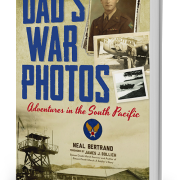The other D-Day hardly anyone knows about – Part 2
The following article is from Chapter 7 of my book “Dad’s War Photos: Adventures in the South Pacific.”
If you want an autographed SOFTCOVER copy, and you live in the United States. I can mail you a copy. Click the “Buy Now” button to buy from Paypal.
The book is also available from Amazon.com in Softcover, Hardcover, and Kindle ebook.
CHAPTER 7
The Battle for Biak Island and
the Capture of Mokmer Airdrome
The Japanese had taken the Pacific islands in giant strides and would not relinquish even the smallest of these without a bloody conflict. The Americans fought dot by dot on the ocean’s map to drive back the invaders. The 863rd Engineer Aviation Battalion was ordered to move to continue the strategy of island hopping planned by General Douglas MacArthur, Supreme Commander of the Southwest Pacific Area.

This move was to a seemingly insignificant island called Biak. It was a part of the Schouten Island chain in the Netherland East Indies, previously held by the Dutch but under Japanese control for the past three years.
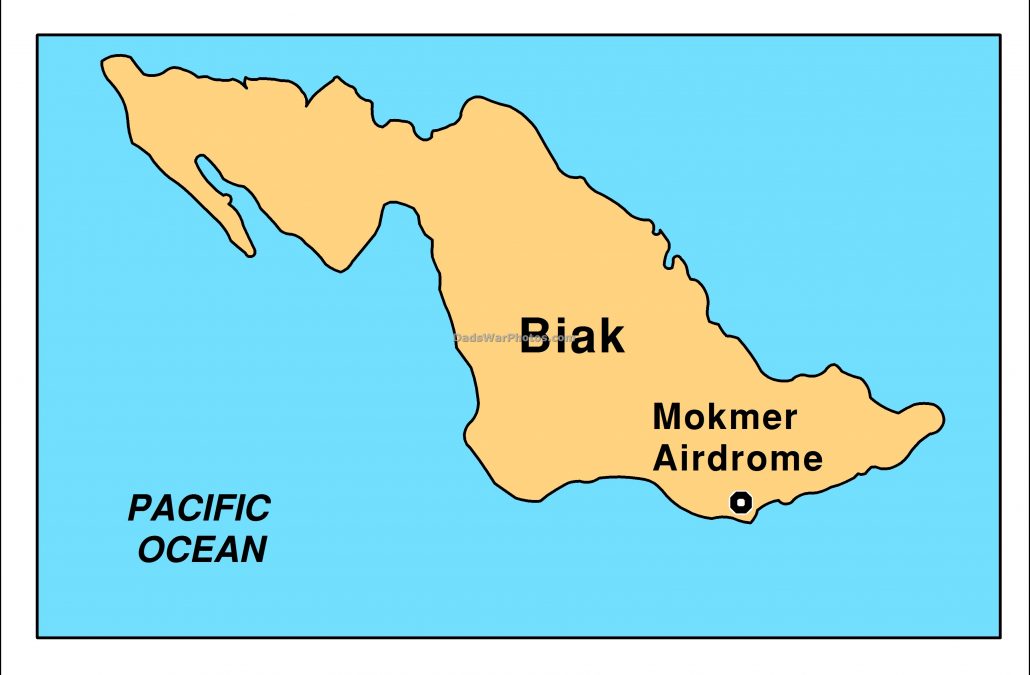
Given its size, Biak seemed irrelevant, but the Japanese built three airdromes there that MacArthur desperately needed. Those airdromes had to be captured leaving the airstrip, control tower and operations buildings intact. My father’s battalion was responsible for capturing and keeping operational control of the airdrome near the native village of Mokmer.
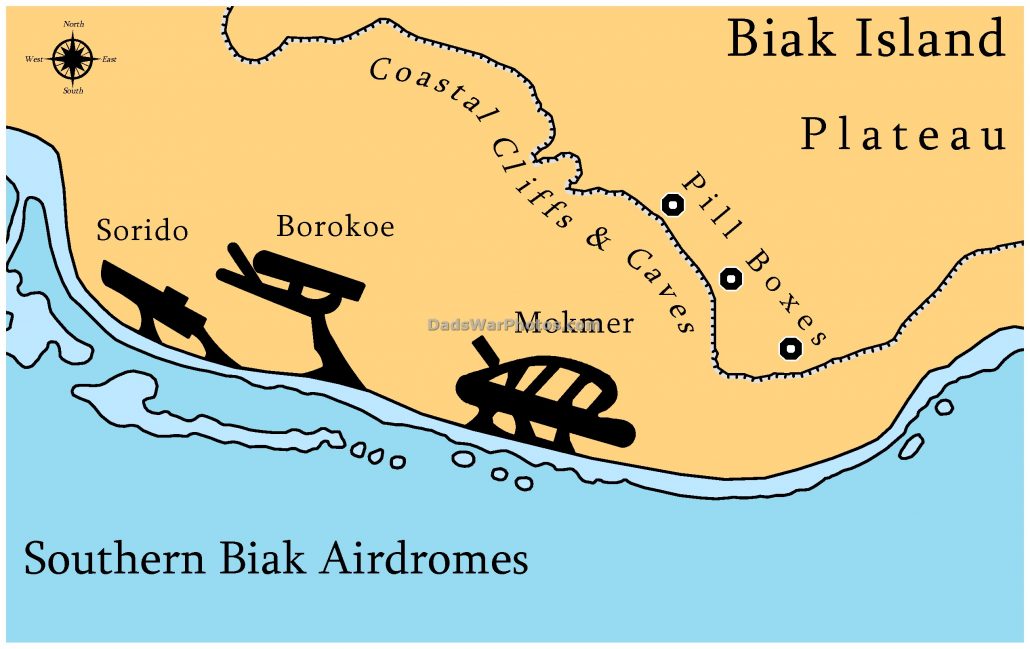

There, the Japanese spent over a year building significant defensives, including large cannons and pillboxes of various sizes. These fortifications provided cover for the Japanese to post sentinels and shoot any approaching invader. Pillboxes were usually constructed using reinforced concrete. When proper construction materials were in short supply, they were solidly constructed using coconut logs and covered with a thick dirt roof and camouflaged with tree branches to disguise their location from distant American cannons and approaching soldiers.
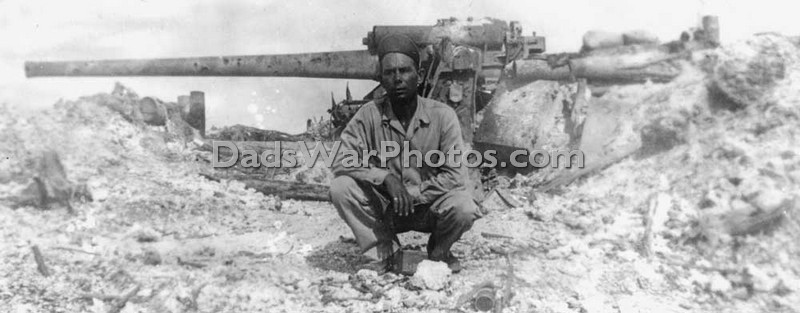
The U.S. Army Infantry staged a full-scale assault on southern Biak, including a gunnery duel and air attack, with mixed results. As my father’s battalion approached by LST, they were hammered by deadly fire from Japanese coastal cannons on top of the ridge overlooking their landing zone.
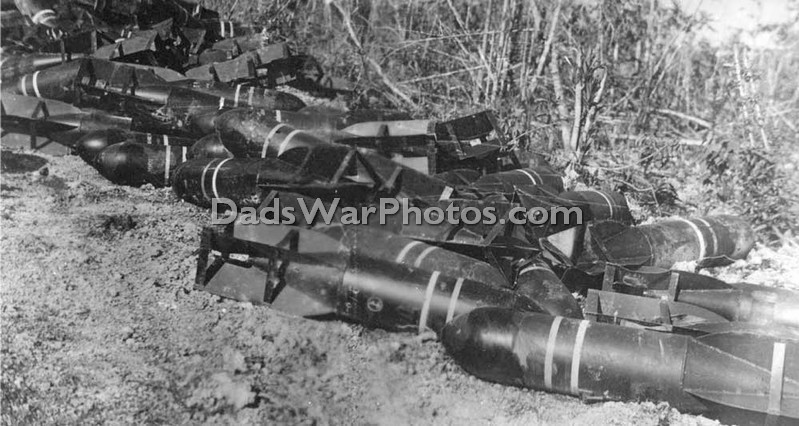
For many young Americans, the shallows before the beach became a killing field. Coral reefs grounded LSTs a full five hundred yards from shore, forcing the soldiers to wade through cannon and machine gun fire in chest-high surf to the beach.
While the battalion was approaching Biak, the Japanese defenders were shooting their large cannons at them trying to sink their ships. One of the cannon shells landed in the shallow water near the ship and exploded, sending shrapnel flying everywhere. Two men in the battalion were wounded by this shrapnel as they were climbing down the landing net over the side of the ship. They later received the Purple Heart medal for their injuries.

Those who survived to the beach faced a terrain that sloped upward and changed elevation 50 to 200 hundred feet. The slope was pocked with caves where the Japanese had placed mortars and artillery. They had a bird’s-eye view for miles around, enabling them to shoot at the U.S. troops and their machinery. The Japanese defenders steadfastly held their positions, and on June 8, 1944, the American infantry had yet to dislodge the defenders. That was the day the LST carrying my father found its way onto the beachfront battlefield.
It took two months to clear the Island of all Japanese defenders. A lot of them were killed. The remainder escaped to the northern part of the Island where Japanese ships would help them evacuate.
Now that the enemy threat was gone from the Island, the troops had a little time to relax. Bob Hope and his USO Show came to Biak and entertained the troops.
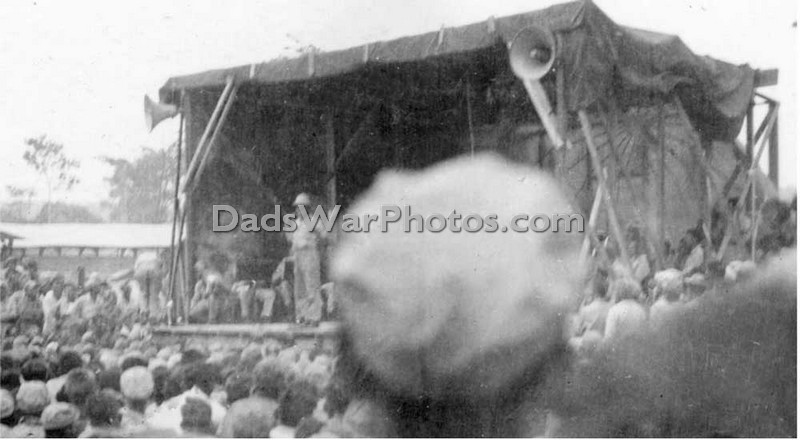
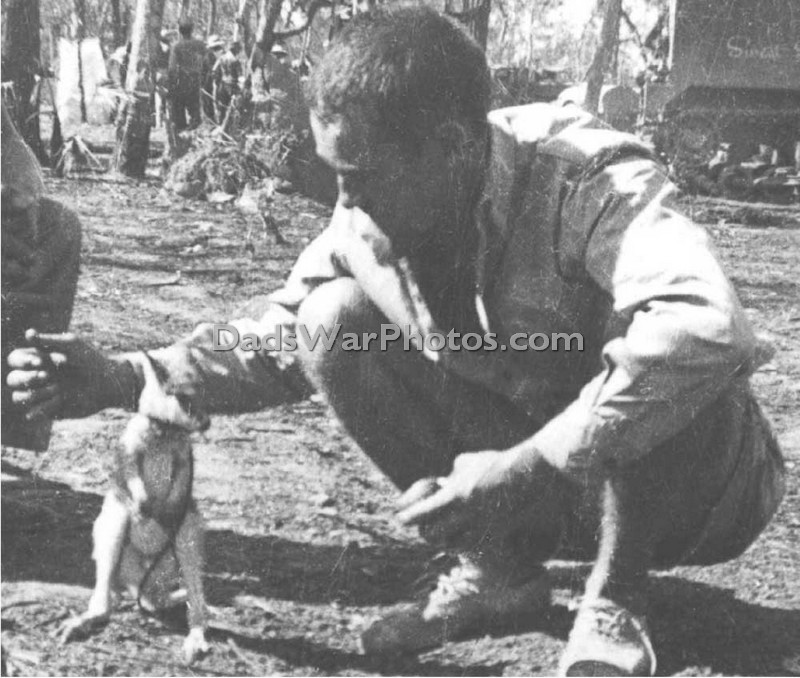
When their job was completed on Biak, they made preparations to break down their camp and load up all equipment onto the large “Landing-Ship, Tank” boats, or LSTs. They hoisted anchor on December 10, 1944.
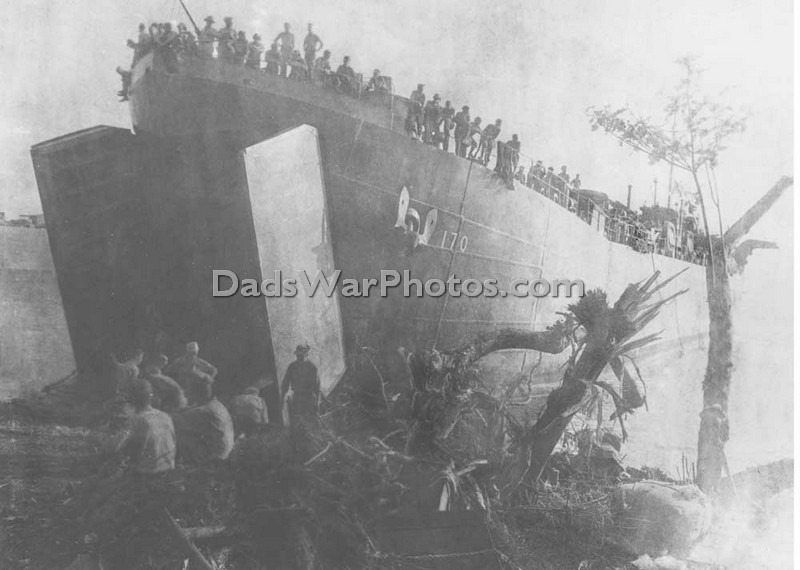
The previous article is from Chapter 7 of my book “Dad’s War Photos: Adventures in the South Pacific.”
If you want an autographed SOFTCOVER copy, and you live in the United States. I can mail you a copy. Click the “Buy Now” button to buy from Paypal.
The book is also available from Amazon.com in Softcover, Hardcover, and Kindle ebook.

